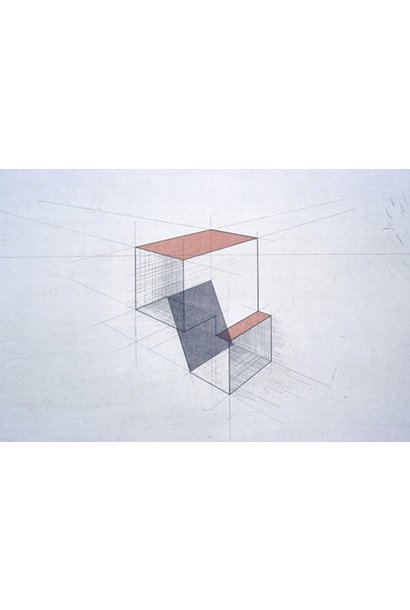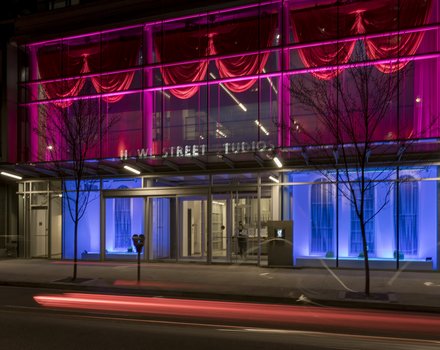

Nancy Fox & Chris Allen “Re/configuring Space”, Nancy Fox & Chris Allen
C$ 0.00 Excl. tax
- File number: EXHI1003
...
In Re/configuring Space, Nancy Fox and Chris Allen investigate the juxtaposition of space and time within the context of exterior and interior urban sites. Both artists examine modernist architecture as a point of spatial reference and comment on the way these spaces frame and determine our everyday lives. What is particularly exceptional about both these artists’ works is how they express and record the urban landscape in its most apparent and discreet variations and permutations.
The work of Chris Allen focuses on the effect of time in relation to urban edifices and temporal spaces. The combination of intaglio techniques, waterless lithography, chine-collé, acrylic and enamel paints create a subdued and striking effect. Allen’s process is unique in his use of a layered plexiglass substrate for the expressive painted elements of his work. The pieces are printed upon thin kozo paper, followed by chine-collé and acrylic medium onto the back of the plexiglass layer. The inside face of the plexiglass is then physically scored and painted upon.
There is a compelling sense of impermanence and a perpetual process of decay evoked in these works. Chris Allen has intentionally created cityscapes that are ambiguous and lacking in a sense of temporal history. The viewer seeking familiar signage, markers and historic landmarks might feel more than a bit stymied as the sites presented appear to have undergone a deliberate process of defamiliarization. Of this process, Allen states:
“… the structures depicted in the works are generalized composites of several sites – not meant to represent any particular site, but rather requiring the viewer as a point of reference to attach them to a space. As such, the depicted structures have no specific history. It is, rather, their future histories – alluded to in the visible scrapes, corrosions, and disintegrations marking them.”
On first glance, the viewer may note of the passage of time as they read the works from left to right. Individual titles, for example The Realization of Passing, suggest a fleeting quality, a moment in time. Allen has succeeded in creating an urban landscape that reads as both commonplace and mysterious. One is left wondering what might become of the freshly historic marks left behind in Chris Allen’s reconfigured and remapped urban environments, posing both questions and possibilities in the ways in which we perceive and move through physical and psychological spaces.
Nancy Fox’s delicately rendered prints and three-dimensional constructions also investigate movement and pictorial space by using elements of formal structure. The minimalist aesthetic of theses compositions references the systematic qualities of engineering and architectural drawings and blueprints. The images of hallways, air ducts, and underpasses transcend structural functionality, as Fox also directs the viewer toward a contemporary critique beyond the pure structural functionality of these forms and spaces. Although there is an emphasis upon clear perspective points and geometries in her work, Fox has set out to challenge the dichotomies between the strange emptiness of these structural spaces, designed not only for the directional flow of air, but also of people. In this work, Nancy Fox posits a “juxtaposition of these solid constructed forms, the ‘negative’ air space that they create, and our consciousness of the space as we wander, float, or speed through”.
The spaces and forms in her etchings are divided, bent, and curved in the places in which we traverse, linger, and inhabit. The emphasis is upon the sensibilities of passage and transitory movement through architectural environments. They also suggest a means to accessing the architectural networks of the city, the trails of ductwork and passages a means of sealing off or opening up these external and internal domains.
Nancy Fox has chosen numerical titles for these works, notably C, S, L, Z, and Y, addressing the structural and formal qualities of the work. There is something that borders on the uncanny when closely observing the work in a series for the three-dimensional pieces. Passageway (red) is aptly titled and a superbly constructed piece constructed in birch, with a repetitious oval pattern screen printed inside its flat interior. Reminiscent of Donald Judd’s formalist sculptures, Fox’s small-scale pieces are also eloquent re-interpretations of commonplace structural forms and objects. We traverse the functional spaces in Fox’s work rather less cursorily than usual, as the space of the gallery allows for rare moments of pausing – time for observing and pondering the subtleties in detail and metaphoric qualities of the forms and spaces that we so often take for granted.
Curated by Gregory Ball



